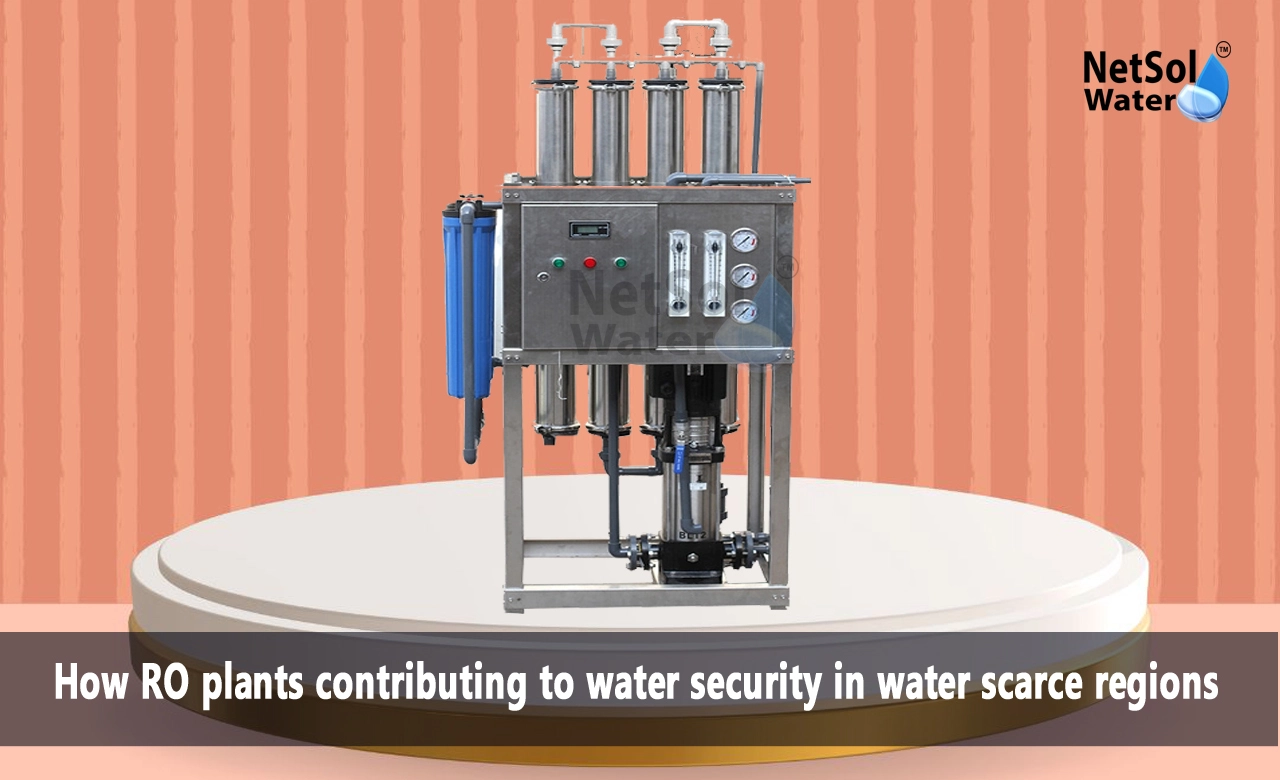How RO plants contributing to water security in water-scarce regions?
Water scarcity threatens many places of our planet. Population increase and climate change pressure our water resources making clean drinking water scarce. RO plants offer a solution to water security concerns in dry locations. We'll investigate how RO technology works its effects on water availability and how it ensures sustainable water for populations facing chronic shortages.
What are RO Plants and How Do They Work?
RO plants purify water using a membrane filtration technique. They drive water through a semi-permeable membrane with microscopic pores. Water molecules pass through but bigger particles like salts minerals and pollutants can’t.
This technique eliminates up to 99% of dissolved solids bacteria and other contaminants from water. RO plants cleanse seawater brackish groundwater and wastewater generating clean drinkable water that meets criteria.
An RO plant includes:
1. Intake system that collects raw water
2. Pre-treatment that eliminates big particles and changes water chemistry
3. High-pressure pumps that drive water through membranes
4. RO membrane modules that filter out pollutants
5. Post-treatment that adds minerals and disinfects
6. Storage and distribution for treated water
Advantages of RO Plants for Water-Scarce Regions
RO technology has important benefits for solving water scarcity:
Versatility in Water Sources
RO plants address diverse water quality. Coastal locations employ RO to desalinate seawater. Inland regions cleanse brackish groundwater or recycle wastewater. This adaptability allows arid places to exploit previously useless water sources.
High Water Recovery Rates
Modern RO units have water recovery rates up to 85%. They create 85 litres of pure water from every 100 litres of feed water. This great efficiency matters in settings where every drop counts.
Scalability
RO plants serve local communities and huge cities. Modular systems offer easy expansion as need develops. This adaptability adjusts to diverse circumstances and budgets.
Improved Water Quality
RO removes dissolved sediments and impurities providing high-quality water that often exceeds drinking standards. This matters in locations with contaminated or high-salinity water sources.
Reduced Dependence on Traditional Sources
RO plants tap alternative water sources relieving pressure on overstressed rivers aquifers and reservoirs. This preserves natural ecosystems and ensures more sustainable water management.
Conclusion:
RO plants prove beneficial in tackling water security concerns in dry locations. They deliver reliable clean water from previously unusable sources helping communities build resilience against shortages and promote public health.
RO plants should be part of a complete water management strategy comprising conservation demand management and protection of natural water sources. As technology improves RO plants will likely become more efficient and sustainable playing a critical part in maintaining water security for future generations.
To explore customised commercial RO plants, Industrial RO plants, ETP or STP solutions for your needs in your areas and nearby regions, contact Netsol Water at:
Phone: +91-965-060-8473, Email: enquiry@netsolwater.com



